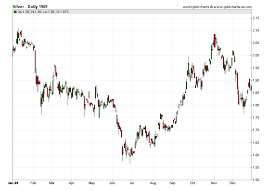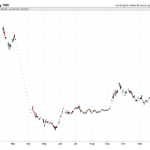The year 1969 was a time of great change and upheaval in the United States. It was a year marked by the Vietnam War, the Civil Rights Movement, and the Apollo 11 moon landing. Amidst all of this, the price of silver was also experiencing significant fluctuations, as the metal had been almost fully demonetized and withdrawn from mass circulation coinage.
In this article, we take a look back at the price of silver and the cost of living in 1969, examining the factors that affected prices and the daily fluctuations that occurred.
As we delve into the world of 1969 silver prices and cost of living, it is important to note that while SD Bullion offers customers the ability to purchase physical precious metal bullion products, using their online price data for speculative purposes is not advised. The information provided here is merely for educational purposes, allowing us to gain a deeper understanding of the economic landscape of the time.
By examining the price of silver and the cost of living in 1969, we can gain insight into the challenges and opportunities that faced Americans during this pivotal moment in history.
Silver Prices in 1969
In 1969, the price of silver in the United States was volatile, ranging from $1.60 to $2.00 per ounce due to economic and government factors, and reached a high of $2.00 per ounce on November 3, 1969.
The price of silver was also affected by the withdrawal of silver from mass circulation coinage and an attempt by the US government to stabilize the price of silver.
Long term trends and global demand also played a significant role in the fluctuation of silver prices during this period.
Most 90% silver coins had already been saved and held by long term collectors and price speculators, which contributed to the instability of the market.
Additionally, the US dollar price per troy ounce swung from annual high prices above $2.10 oz to as low as $1.57 oz, reflecting the impact of the economic recession in the United States.
Despite these challenges, the global demand for silver remained strong, with foreign exchange (Forex) prices being the most widely quoted in the precious metals industry.
Factors Affecting Prices
Factors that affect the value of precious metals are multifaceted and include economic indicators, global supply and demand, geopolitical events, and investor sentiment.
In the case of silver prices in 1969, the value of the metal was impacted by a combination of economic recession in the United States and attempts by the US government to stabilize the price of silver. These factors led to a decline in silver prices, with the US dollar price per troy ounce swinging from annual high prices above $2.10 oz to as low as $1.57 oz.
Moreover, the historical significance of silver prices in 1969 lies in the fact that the metal was almost fully demonetized and withdrawn from mass circulation coinage. Most 90% silver coins had been saved and held by long term collectors and price speculators, resulting in a scarcity of supply.
These factors contributed to the volatility of silver prices in 1969, which fluctuated between $1.60 and $2.00 per oz during the period from August 5, 1969 to December 31, 1969. The impact of government policies on the value of silver prices continues to be a relevant factor in the precious metals industry today.
Daily Price Fluctuations
One may wonder how daily price fluctuations of silver in 1969 impacted the overall market trends and investor sentiment. Despite being affected by economic and government factors, silver prices were volatile throughout the year. Daily silver prices ranged from $1.60 to $2.00 per oz, and they fluctuated between these values from August 5, 1969, to December 31, 1969.
The historical silver price analysis reveals that the silver prices reached a high of $2.00 per oz on November 3, 1969. Conversely, they reached a low of $1.62 per oz on August 5, 1969.
Such daily fluctuations of silver prices can impact the overall market trends and investor sentiment in various ways. For instance, if the price of silver falls, investors may shift their focus towards other commodities, affecting the demand for silver. Similarly, if the price of silver increases, investors may start buying more of it, leading to a surge in demand. Such trends impact not only the current market scenario but also future market trends, making daily price fluctuations a critical aspect of silver market trends.
Therefore, understanding the daily fluctuations of silver prices in 1969 could help investors make informed decisions when investing in silver or other commodities.
Cost of Living in 1969
The economic landscape of 1969 was marked by various aspects of daily life that influenced individuals’ purchasing power and standard of living.
The job market in 1969 offered a range of salaries across different professions. A manager trainee, for instance, earned $7,500 per year, while an office manager technical earned $17,000 per year. On the other hand, a parking lot attendant could expect to earn $2 per hour, while a sales trainee earned $1.75 per hour.
When it came to housing, the cost of living in 1969 varied depending on the location and type of property. Real estate prices for houses for sale in Denville, Morristown, and Rockaway, for instance, were different from those in Long Valley, Succasunna, and White Meadow Lake. Similarly, apartment and room rental prices in Boonton, Morris Twp., and Parsippany ranged from $110 to $265 per month.
The affordability of housing was a crucial factor in determining individuals’ quality of life in 1969. While salaries varied across professions, housing costs could be a significant financial burden for many.
The cost of living in 1969 was influenced by factors such as inflation and economic recession. Therefore, it was important for individuals to be mindful of their spending and make prudent financial decisions to maintain their standard of living.
Overall, the cost of living in 1969 was an important consideration for individuals in determining their financial well-being, and it reflected the economic conditions of the time.
Frequently Asked Questions
What was the global demand for silver in 1969?
Global silver demand in 1969 was driven by various factors, including industrial uses such as photography and electronics, as well as investment demand. Trends and projections suggest a continued increase in demand for silver, particularly in emerging markets.
How did the price of silver in 1969 compare to other precious metals?
Silver market trends in 1969 showed that the metal’s price fluctuated between $1.60 and $2.00 per oz due to economic and government factors, while other precious metals such as gold and platinum offered better investment opportunities during the same period.
What was the impact of the Vietnam War on the price of silver in 1969?
The Vietnam War had a significant impact on the price of silver in 1969 due to the inflation caused by the war effort. This led to increased interest in silver investment opportunities as a hedge against inflation.
Were there any major technological advancements in the silver mining industry in 1969?
New advancements in mining techniques and extraction methods were made in the silver mining industry in 1969, including the development of more efficient refining technology and automation systems. These advancements resulted in increased labor efficiency and higher yields.
How did the price of silver in 1969 compare to the price of other commodities, such as oil or wheat?
The price of silver in 1969, compared to other commodities such as oil or wheat, was affected by historical factors and its comparison with gold. Silver’s price volatility was due to an economic recession and government attempts to stabilize the market.





